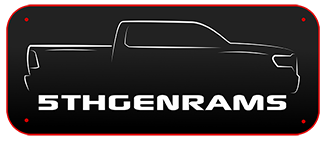BoilerPigg
Member
Talked with the head mechanic at our dealership today. He's quite an advocate for these ceramic coated shorty headers. Only drawback is the cost up here in Canada. A good set he was saying can cost close to $2K all said and done...
They were warped as new and I didn’t think to check them since they were both new and from a reputable mfg. I made the issue apparent to AFE and they said that they would discuss with production. The warrantied headers that they sent were also warped but they were sent before my conversation with AFE. I had the new headers machined and they have not had any seating or leaking issues at the main head-side flange.Were these checked when new and/or does the warp develop over time? And depending on the answer to that, is the new shape more stable than original and/or might it be better to have these machined, rather than buy new which might warp like the old ones.
My current leak at the collector is probably not something most people would even notice but I want it 100% right, not 98%.Talked with the head mechanic at our dealership today. He's quite an advocate for these ceramic coated shorty headers. Only drawback is the cost up here in Canada. A good set he was saying can cost close to $2K all said and done...
Interesting video. Ive been thinking of going this way. One problem I see is the massive difference in temperature. I know for a fact that those infrared thermometers get fooled by shiny surfaces. Flat black will be accurate but any shiny surface can be 100'F off or more. Still pretty impressive...
It does indeed, and many thin wall tubes get brittle and disintegrate. Coatings are usually sprayed inside them electrostatically to combat that problem.Furthermore, if the coating is really blocking all that IR, it may actually cause the tubing to get much hotter under operating conditions.
Not sure about this palAlso, "ceramic" coatings are mostly infrared blockers and the no-touch thermometers rely on infrared, so it's pretty certain the thermometer is lying to you in a big way.
And if you apply a bit of critical thinking, you realize there is no way a thin coating of anything is going to have a significant effect on surface temperature. Blocking IR may be useful in itself, and the coating may impart rust protection, but I say BS on the temperature reduction.
Furthermore, if the coating is really blocking all that IR, it may actually cause the tubing to get much hotter under operating conditions.
Yeah, so the guys in the video make the same mistake trying to use an infrared thermometer to measure temperature of an object that's been coated with an infrared blocker. So any conclusions they might draw from those erroneous measurements aren't worth the electrons it took to record them. And I had a good laugh when they said they could "feel the heat". No, they can't, unless they actually touch it, which I don't recommend at all.The tubes are coated inside and out and as I mentioned, there is a notable reduction in heat radiating from the headers that are coated vs un-coated. I have no financial interest or benefit in making supporting claims to coatings but they do make a difference.
Check out this video for a professional review: skip to 5:00
Header test
yeah the manifold and the rear window leak... fca really drop it, the manifold its been like that on previous generation tooHeading in tomorrow for my 2nd round of Exhaust manifolds. First driver side and passenger side was cracked and replaced around 30k miles. Now at 44k and the tick is back and sounds like the driver and passeger side again. This is freaking insane that there are this many people having this issue and they haven't come up with a new design or TSB. Has anyone had luck after having a set replaced and not needing a second? Did I just get a 2nd bad batch?
I wonder where they source the cast-iron for the Mopar Manifolds.yeah the manifold and the rear window leak... fca really drop it, the manifold its been like that on previous generation too
I brought mine a while back to have mine replaced, my service advisor called me and said the new ones showed up with cracks in them. They had to order another set to fix my truck.I wonder where they source the cast-iron for the Mopar Manifolds.
Does anybody know where they are produced?
Like most things nowadays they are probably manufactured by a third party for Mopar.
Same here with my '21 eTorque. Took it in yesterday for the work, but the dealer told me there are 1,900 repair sets on backorder in the system. It's going to be a couple of months, he guesses.I have a 2020 e torque and just took it in for the unmistakable sound of an exhaust manifold leak. I have 27k miles and out of bumper to bumper, thankfully it’s covered under power train. All good except the manifolds are on back order and parts had no clue on an ETA.
That way the sales department can get a chance at ya.Same here with my '21 eTorque. Took it in yesterday for the work, but the dealer told me there are 1,900 repair sets on backorder in the system. It's going to be a couple of months, he guesses.
An aside: why does a service department not confirm the parts are on hand before the customer arrives--or check the parts availability at all?
